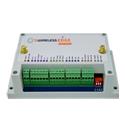
What's going on with Redcap?
Cellular operators around the globe are racing to implement 5G networks to meet the demand for more bandwidth on consumer mobile phones. Those who have been around a bit remember the 2G and 3G network shut downs intended to free up capacity for 4G LTE networks. The changes forced equipment suppliers to replace products in the field with 4G LTE capable technology, or be left without connectivity. Today product developers working on long-life, highly regulated products are anticipating a 4G LTE network shutdown and are considering their options to support 4G today, and 5G for the future. The problem is the technology to support all the features of a high-bandwidth, low latency 5G radio is expensive. 5G cellular modules are priced in the low hundreds of dollars compared to tens of dollars for 4G LTE solutions today creating a price barrier for many applications, but there is a solution on the horizon.
The 3GPP standards are here to save the day. In 2022, 3GPP Release 17 added support for a simpler, lower cost 5G solution designed for low-bandwidth applications. The new 5G NR RedCap stands for 5G “New Radio” “Reduced Capacity”. The standard removes features to reduce the complexity of the chipset and product. The result is a cellular radio that can connect to 5G NR networks with a bandwidth of 150/50 Mbps (DL/UL), same as a 4G LTE CAT4 device, and only requires a single antenna. Both factors ultimately reduce the total system cost.
Unfortunately, many 5G networks have been deployed as 5G NSA (Non Stand Alone) meaning devices use the 4G LTE core network as primary path to the EPC, and only after successful attach the 5G RAN capability is used. This means the first generation RedCap products from cellular module suppliers must support both a 4G LTE and 5G NR capabilities. This results in modules priced twice as much as 4G LTE, but less than half of a full blown 5G solution.
North American carriers have demonstrated RedCap on their networks in 2023, and have publicized their plans for roll-out completing in 2024. Read more on AT&T Blog, Tmobile posts on X, and Ericsson’s press release with Verizon. Cellular module suppliers are also developing and certifying RedCap modules on carrier networks, targeting general availability in 2H 2024.
Carriers invested heavily to deploy nationwide 4G LTE networks, so they don’t want to phase out 4G LTE technology any time soon. However, there may be lessons from previous generations of cellular technology that can help guide us. First generation networks lasted for about 30 years, Second generation(2G) about 30 years, 3G about 20+ years, and 4G is currently about 15 years old. So, it might be reasonable to expect 4G LTE to stick around for another 5 to 15 years.
Now product developers that don’t require the high-bandwidth capabilities of 5G have a choice to either continue using 4G LTE cellular modules at the risk of a limited product life, or design for network longevity using a 5G RedCap module with 4G LTE fallback for roughly twice the price. The costs to certify RedCap products on cellular networks are also higher because both the 4G LTE and 5G RedCap capabilities must be tested along with the new frequencies introduced in 5G.
If you are developing a device, and have questions about the technologies discussed here, or need help with design or manufacturing wireless products, please contact us.
Author:
Kurt Larson – VP North America


























